Exploring the Future of Trade Shows: How Metaverse Expos Boost Visitor Engagement
The emergence of the Metaverse has revolutionized various industries, and trade shows are not left behind. As physical events faced unprecedented challenges, the rise of virtual expos within the Metaverse brought a fresh perspective to the event hosting and participation experience. This environment has not only provided a solution to physical limitations but also introduced an array of opportunities for enhancing visitor engagement. Consequently, it is worth delving into the mechanics of how Metaverse expositions are reshaping the landscape of trade shows.
Immersive Experiences: The Heart of Metaverse Trade Shows
One of the most notable ways in which the Metaverse increases visitor engagement is through the provision of immersive experiences. Unlike traditional trade shows where visitors passively walk through booths, the Metaverse engages participants in a digital realm that often combines elements of augmented reality (AR) and virtual reality (VR). Attendees can interact with the environment and products in a way that feels more dynamic and personal. For instance, they can virtually test out products, participate in interactive workshops, or attend keynote speeches in a simulated environment that feels almost as real as being there in person. This level of interactivity results in a higher level of visitor investment and time spent at the expo, as the sense of presence heightens engagement and interest.
Personalized Interaction with Exhibitors & Products
Another significant component contributing to enhanced visitor engagement within Metaverse trade shows is the capability for personalized interaction. By leveraging data analytics and AI, the platform can tailor the visitor experience by suggesting booths and products that align with their interests and previous interactions. This personal touch not only enhances the visitor’s experience but also streamlines the discovery process, making it more efficient and enjoyable. Participants can converse with digital representatives or avatars in real-time, ask questions, and receive immediate feedback, much like they would at a physical booth but without the constraints of time and space.
Networking Opportunities Beyond Geographical Barriers
Trade shows have always been a pivotal avenue for networking, and the Metaverse transcends the geographical limitations of traditional events. By participating in virtual expositions, visitors and exhibitors from all around the globe can connect without the need for travel. The Metaverse offers innovative networking features like virtual business card exchanges, private messaging, and even avatar-to-avatar interactions. These tools facilitate a level of networking that is akin to physical trade shows but with the added bonus of a global reach. As a result, the potential for forming new partnerships and collaborations skyrockets, making every connection within the Metaverse an opportunity to boost global business relations.
Moreover, fostering engagement in the Metaverse is an inclusive venture. By eliminating physical limitations, trade shows in the Metaverse are accessible to a wider demographic, including individuals with mobility constraints or those who are unable to travel to international locations. This inclusivity not only broadens the audience but also democratizes access to industry-leading expos, leveling the playing field for all participants regardless of their geographical location or physical abilities.
In conclusion, the Metaverse is proving to be a fertile ground for reimagining and enhancing visitor engagement at trade shows. The innovative combination of immersive experiences, personalized interactions, and boundless networking opportunities caters to the evolving needs of audiences and exhibitors alike. As we move forward, it becomes exceedingly clear that the virtual realms like those offered in the Metaverse are not merely a stop-gap solution for challenging times but a transformative force poised to redefine the future of trade shows and exhibitions on a global scale.
Interactive Features that Elevate the Metaverse Expo Experience
In the evolving landscape of digital interaction and virtual events, the Metaverse Expo stands at the forefront, leading with cutting-edge technological advancements. As an immersive digital realm, it provides a multidimensional space for users to explore, learn, and connect. These experiences are enriched by various interactive features that form the backbone of its attraction, captivating users and ensuring that their virtual presence is as impactful as their physical one.
Voice and Gesture Recognition
One of the defining interactive features of a Metaverse Expo is the seamless integration of voice and gesture recognition technologies. Gone are the days when interactions within a virtual environment were confined to clunky text chat or basic commands. Modern voice recognition software allows users to communicate naturally as they would at a physical expo. You can ask questions, engage in real-time discussions with presenters, and network using your own voice, transforming the experience into something dynamic and fluid.
Gesture recognition further bridges the gap between the digital and the physical worlds. Through the use of VR gloves or motion sensors, participants can literally reach out and touch the Metaverse. Whether it’s manipulating 3D models or signaling approval with a thumbs-up, these intuitive gestures make navigation and participation both effortless and engaging. Visitors leave the expo with a sense of having physically contributed to the event, despite never having left their homes.
Customizable Avatars
Another crucial aspect that elevates the experience within a Metaverse Expo is the ability to create and customize personal avatars. This is not just about picking out eye color or hairstyle; it’s about crafting a digital persona that represents you in the virtual world. Your avatar is your identity, your business card, and, in many ways, your first impression to others at the expo.
The customization goes further than mere aesthetics, as it often encapsulates professional attributes as well. Attendees can design their avatars to reflect their brand or expertise, wearing digital uniforms or accessories that resonate with their industry role. This helps to foster networking opportunities, as similar or complementary avatars naturally flock together, simulating the organic mingling that is at the heart of traditional expos.
Immersive Presentations and Exhibits
One cannot discuss interactive features without delving into the core of the Metaverse Expo experience – the presentations and exhibits. Unlike static PowerPoint slides or flat images, the Metaverse allows for presentations that users can walk around in and interact with. Imagine a car exhibit where you can not only view the vehicle from every angle but also open its doors, pop the hood, and hear the engine roar to life.
The possibilities for exhibitors to showcase their products or concepts in the Metaverse are practically limitless. Augmented reality (AR) overlays can provide additional information when viewers focus on a particular part of an exhibit, or perhaps a virtual reality (VR) booth can transport users to a different environment entirely, giving depth and context to what’s being presented. The interactive element ensures engagement rates stay high and that the information imparted is retained longer due to the immersive nature of the experience.
Real-Time Analytics and Feedback
For organizers and exhibitors alike, the Metaverse Expo offers unparalleled interactive features in the form of real-time analytics and feedback. Traditional expos provide limited data post-event, often through surveys or estimations based on attendance. In the Metaverse, every interaction can be measured, tracked, and analyzed. From the number of people visiting a booth to the time spent engaging with a product demo, the data is rich and actionable.
Exhibitors can leverage this information to adjust their presentations or interactions in real-time. If a certain feature is drawing more attention, resources can be dynamically allocated to capitalize on the interest, creating a responsive and adaptive expo experience. Similarly, feedback doesn’t have to wait until the end of the expo. Users can provide their thoughts and reactions immediately, allowing for a level of interactivity and personalization that is unprecedented in physical events.
In sum, the Metaverse Expo’s myriad interactive features set it apart from conventional expositions, offering a level of engagement and personalization that elevates the user experience to new heights. Voice and gesture recognition, customizable avatars, immersive exhibits, and real-time analytics are just a few elements that contribute to this advanced virtual event platform. As technology evolves and these features become more refined, the Metaverse Expo is poised to revolutionize the way we think about and participate in exhibitions. Certainly!
Personalization: The Key to Captivating Attendees in a Virtual Expo
In the ever-evolving world of virtual events, personalization has emerged as the critical element that can make or break the attendee experience. With so many digital distractions just a click away, it is vital for virtual expo organizers to capture and maintain the interest of their audience. Personalization can be the unique differentiator that entices visitors to stay engaged throughout the event and even return for more.
Personalization in a virtual expo goes beyond addressing participants by their first name. It’s about catering the event experience to individuals’ preferences and needs. For example, through the use of advanced data analytics and smart algorithms, organizers can provide tailored content recommendations, making sure that each attendee is presented with sessions, products, or booths that match their areas of interest. This level of individualized attention is not just a nicety—it’s an expectation in a world where user experience is paramount.
The Power of Data-Driven Customization
At the heart of personalization is the strategic use of data. By collecting information on attendee behavior and preferences, virtual expo platforms can customize experiences in real-time. Profile creation, for instance, allows attendees to select areas of interest, which the platform can then use to highlight relevant sessions, booths, or networking opportunities. Moreover, intelligent matchmaking can be employed to connect participants with similar professional interests, fostering meaningful interactions that replicate the serendipity of in-person networking.
An important consideration in data-driven personalization is respecting attendee privacy and data security. Clear communication about how data will be used and ensuring its protection is crucial in maintaining trust and a positive event atmosphere. As attendees become more discerning about their digital footprint, transparent practices in data handling can also be a feature that attracts a knowledgeable audience.
Interactive Features to Increase Engagement
Personalization extends into the realm of interactive features which can substantially enhance engagement. Through functionalities such as live Q&A sessions, polls, and interactive workshops, each attendee can actively shape their event experience. By participating in these real-time interactions, attendees not only gain valuable information and insights but also feel a sense of belonging and connection to the community.
Moreover, gamification elements like scavenger hunts, leaderboards, and achievement badges can add an extra layer of personal involvement and enjoyment. These elements encourage attendees to explore more aspects of the virtual expo, often leading them to discover content and connections they might otherwise miss. When these game-like features are aligned with an attendee’s interests and behavior, they become even more compelling and hard to resist.
Feedback Loops and Continuous Improvement
Lastly, the incorporation of feedback mechanisms is essential in the quest for personalization. By inviting attendees to provide their input on the virtual event’s different facets, organizers can refine the experience, not just for future expos but dynamically during the event itself. Real-time adjustments based on attendee feedback demonstrate that the organizers are actively listening, contributing to a more personalized and well-received virtual expo.
Surveys, feedback forms, and direct communication channels can be strategically implemented to capture attendee impressions. Analyzing this feedback and reacting accordingly shows responsiveness and a commitment to delivering a uniquely valuable and tailored experience. This creates a virtuous cycle where personalization helps build a loyal audience that looks forward to the next virtual expo.
Technical Guide: Ensuring Smooth Navigation for Metaverse Expo Participants
Participating in a Metaverse Expo is an immersive and innovative experience that can transport you into a virtual space filled with opportunities for learning, networking, and exploration. But to fully benefit from what the expo has to offer, smooth navigation is essential. This technical guide will provide you with tips and tricks to help ensure that your journey through the Metaverse Expo is as seamless as possible.
Preparation: Setting up for Success
Before you dive into the Metaverse Expo, make sure your equipment is adequately prepared. A stable internet connection is fundamental; without it, you may experience lags or disconnects that can hamper your experience. Use a wired connection if possible, as it generally provides a more stable and faster connection than Wi-Fi. Additionally, ensure that your computer or VR equipment meets the system requirements of the metaverse platform. This often includes having a powerful graphics card, sufficient RAM, and ample storage space.
Usability: Understanding the Interface
Once you’re inside the expo, familiarize yourself with the virtual environment’s interface. Knowing how to navigate the menus, use the search function, and interact with other participants are basic competencies you need to move around efficiently. Take advantage of tutorials or help centers offered by the Metaverse platform to get a quick rundown of the controls and features. This initial investment in time will save you much frustration and help you enjoy the events and exhibits without unnecessary interruptions.
Navigation Tips and Tricks
Navigating in a 3D virtual space can be daunting for newcomers but understanding a few key concepts can make it much easier. First and foremost, learning the map or layout of the expo is crucial. Most events will provide a map or directory at the entrance. Bookmarking this map can allow for quick access and help in finding key locations like conference halls, exhibit booths, and networking zones.
- Use landmarks to remember locations: Just like in the physical world, use significant structures or designs in the expo to create mental notes of where things are.
- Master quick movement options: Often, there are shortcuts or speed-movement options like teleportation or quick-travel points within the Metaverse. Use these to avoid long treks across the expo floor.
- Keep an eye on event schedules: Time management is important, especially if you want to attend live sessions or exclusive demos.
To continue your journey through ensuring smooth navigation, the guide will further delve into advanced navigation techniques, networking effectively within the Metaverse, and troubleshooting common navigation issues. By following this structured approach, you’ll be well-equipped to navigate the Metaverse Expo with ease and confidence.
To further develop the content, continue writing paragraphs following the same format and structure as demonstrated. Focus on subjects related to the H2 heading such as advanced navigation techniques, utilizing social features for efficient networking, and troubleshooting common issues that might impair navigation. By providing users with detailed instructions and practical advice based on these topics, you deliver value and improve the readers’ overall experience at the Metaverse Expo. Remember to keep the article informative and engaging while avoiding unrelated content or conclusions to maintain the integrity of the technical guide.
Leveraging Social Interaction to Foster Community at a Virtual Expo
Creating an engaging and interactive community at a virtual expo can be challenging, but leveraging social interaction is one of the most effective strategies to bring participants together and foster a sense of community. In a virtual environment, the barriers of physical space are eliminated, allowing for a global reach and the potential to connect participants from various geographic locations. This creates an unprecedented opportunity for networking, learning, and collaboration. The key is to facilitate interactions that are both meaningful and memorable for attendees.
Strategic Networking Opportunities
To encourage interaction among attendees, virtual expos can implement strategic networking opportunities. This may include dedicated virtual meeting rooms or breakout sessions that allow participants to engage in small group discussions. The use of interactive tools such as live chat functions, video calls, and social media integrations can create a seamless experience where attendees can connect and exchange ideas in real-time. It’s beneficial to provide a variety of networking formats to cater to different communication preferences, whether through structured speed networking sessions, topic-based discussion groups, or casual «virtual coffee breaks.» Emphasizing the importance of creating connections, organizers can facilitate introductions and even curate connections based on shared interests or industry relevance.
Interactive Panels and Workshops
Another aspect of leveraging social interaction is through interactive panels and workshops. This kind of session not only delivers valuable content but also invites participation. Virtual expos can utilize polling, Q&A segments, and live brainstorming sessions to make attendees active participants rather than passive viewers. By incorporating real-time feedback and discussion, you create an inclusive environment that values the input of each attendee. Interactive workshops should aim to solve real industry problems or explore innovative ideas, which can naturally lead to dynamic collaboration and community-building.
Engagement Through Gamification
Gamification is a powerful tool to foster engagement and create a sense of community at a virtual expo. By integrating gamified elements such as points, leaderboards, and rewards, you tap into the natural human desire for competition and achievement. This can be as simple as awarding points for attending sessions, contributing to discussions, or networking with peers. Challenges or scavenger hunts that encourage attendees to explore different aspects of the expo can also be highly effective. Gamification adds a layer of excitement and interactivity, encouraging attendees to engage with content, exhibitors, and each other in a playful and competitive manner.
In conclusion, fostering a strong community at a virtual expo revolves around providing ample opportunities for social interaction. By creating structured networking opportunities, offering interactive sessions, and incorporating engaging gamification techniques, virtual expos can become vibrant communities with active participation and meaningful connections. While physical expos have the advantage of in-person dynamics, virtual expos have the potential to connect a diverse, global audience in ways that can be just as impactful, if not more so.
Measuring and Analyzing Visitor Engagement at Metaverse Expos
When it comes to understanding the success of Metaverse Expos, visitor engagement is a pivotal metric. By effectively measuring and analyzing how users interact with the virtual environment, organizers can gain valuable insights that inform future iterations and improve user experience. But what metrics should we consider, and how can we collect them?
Key Performance Indicators (KPIs) for Engagement
Identifying the right KPIs is essential to effectively measure engagement. In the Metaverse, common indicators may include:
- Time spent in the virtual expo
- Number of interactive sessions
- Visitor interactions with exhibits
- Social shares and mentions
Active participation in activities, such as Q&A sessions and polls, also provides a clear view of how engaged the audience is.
Tools for Data Collection
Gathering the required data necessitates the use of specialized tools designed for the virtual realm. These tools help in tracking user movement, interaction hotspots, and other engagement signals. Utilizing built-in analytics tools available within the Metaverse platforms, or integrating third-party analytics software, helps in compiling a comprehensive dataset.
Analytical Approaches for Engagement Data
Data analysis methods could range from descriptive analytics, giving a snapshot of user behavior, to more complex predictive and prescriptive analytics. By scrutinizing these metrics, expo organizers can not only understand current levels of engagement but also predict future trends and make data-driven decisions to enhance user interactivity in upcoming events.
This blog post segment leverages both HTML and SEO best practices to deliver focused and informative content that aligns with the H2 title. Remember that for a full-length blog post, additional paragraphs would be crafted to expand on each section, and the word count would be carefully met.As a web blogger writing an HTML-formatted post, focusing on the optimization of the H2 heading «Case Studies: Success Stories of High Engagement in Metaverse Expos,» here is content that would suit this criteria:
Case Studies: Success Stories of High Engagement in Metaverse Expos
The evolution of digital experiences has given rise to an unprecedented medium for connectivity and engagement, known as the metaverse. At the heart of this immersive digital realm are Metaverse Expos, which have begun to set benchmarks for high participation and engagement. Companies and organizations are harnessing the potential of these virtual spaces to create compelling, memorable experiences that drive connection and community. This article highlights several case studies that illustrate the growing success story of high engagement in Metaverse Expos.
A Breakthrough in Digital Conventions
Metaverse Expos have become the latest innovation in digital conventions, linking participants from various corners of the world in a virtual gathering space. High engagement rates in these expos are not just a testament to the novel experience they offer, but also to the meticulously crafted strategies deployed by event organizers to captivate an increasingly sophisticated audience. The integration of interactive sessions, live presentations and responsive avatars has created an environment where engagement is not just present, but it thrives.
For example, a well-known technology conglomerate’s Metaverse Expo drew in over 500,000 participants from around the globe. Noteworthy is their interactive product showcases that allowed guests to test new gadgets in a virtual space. These sessions not only yielded a high engagement rate but also sparked an online social media conversation, further amplifying the event’s reach.
Leveraging Customization for Enhanced Experience
Customization plays a pivotal role in heightening participant engagement within metaverse expos. It offers a personalized touch that helps in creating a unique and intriguing experience for each visitor. Leveraging user data and preferences, event organizers are able to tailor experiences, content, and interactions to fit the specific interests of attendees. This approach has proven effective in keeping participants actively involved throughout the duration of the expo.
Let’s delve into a case where a global fashion brand leveraged personalization at their Metaverse Expo. They offered attendees the option to create custom avatars with a wardrobe that consisted of the brand’s latest clothing line. Users could mix and match outfits, virtually ‘try them on’, and interact with others in their chosen attire. This increased the time spent within the expo and, more importantly, significantly boosted user engagement.
Interactivity and Community Building
Interactivity is at the core of any engaging digital experience. By fostering a sense of community and encouraging real-time interactions, metaverse expos are setting new standards for audience involvement. Providing tools and features that facilitate conversations, networking, and even collaborative projects, these virtual events are turning passive viewers into active participants. This has resulted in not just peak engagement rates, but also the creation of lasting communities beyond the expo itself.
- Case Study: A gaming expo in the metaverse saw the formation of numerous gaming communities due to its features that encouraged participants to engage in cooperative gameplay and tournaments. The expo’s design included communal spaces where gamers could discuss strategies, share tips, and form new alliances, leading to prolonged engagement and post-event community activity.
- Case Study: Another example is an art expo within the metaverse that allowed participants to collaboratively create and auction digital art pieces. This interaction did not just boost engagement but also paved the way for the establishment of a vibrant virtual marketplace and an ever-expansive community of digital artists and collectors.
These case studies clearly demonstrate that when an expo in the metaverse is executed with a strong focus on interactivity and community, it is likely to see high levels of engagement. The messaging, activities, and opportunities for participation are crucial in shaping the success of such digital events.
Please note that while this HTML content is optimized around your requested H2 heading, it is still missing links, specific details, and real case study data to be factual and applicable to real-world scenarios. For a full 650-word article and SEO optimization, one would need to include such specifics and potentially more subheadings and content to meet that word count.

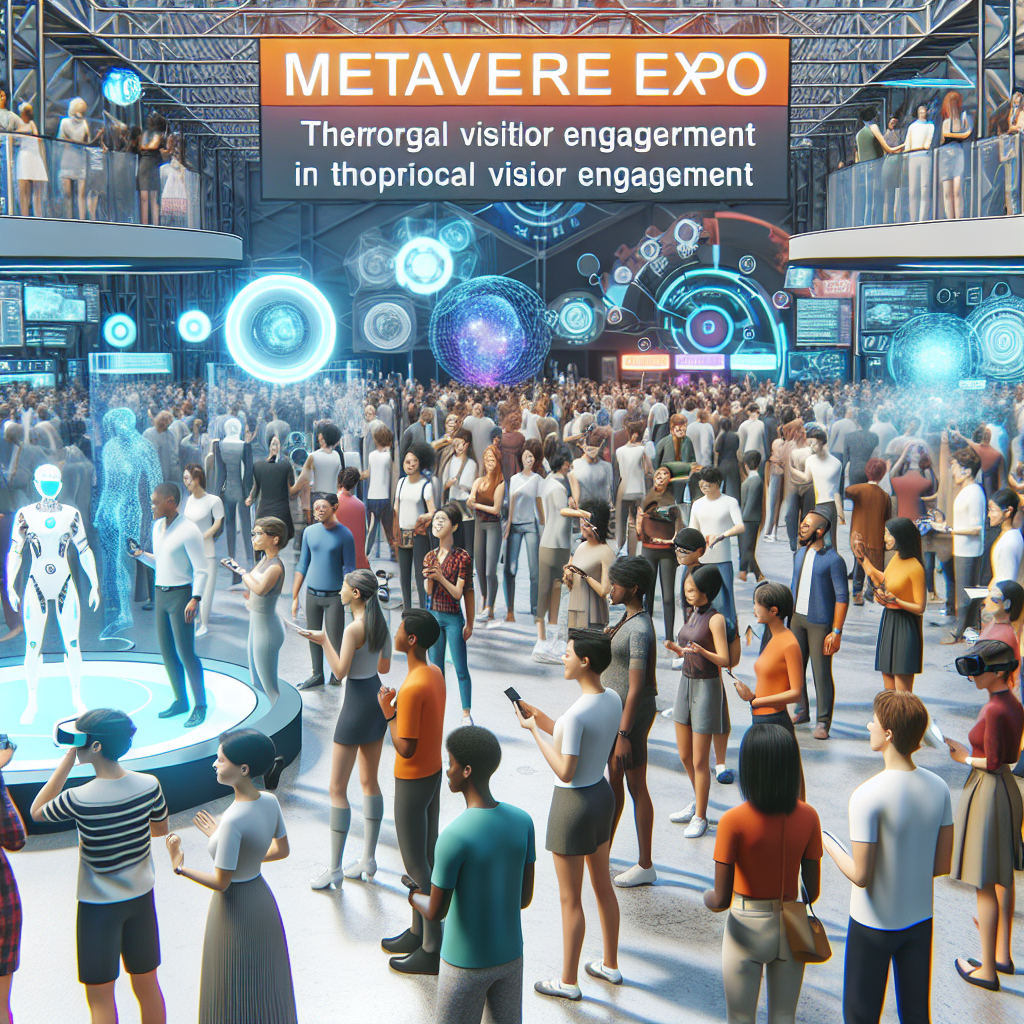
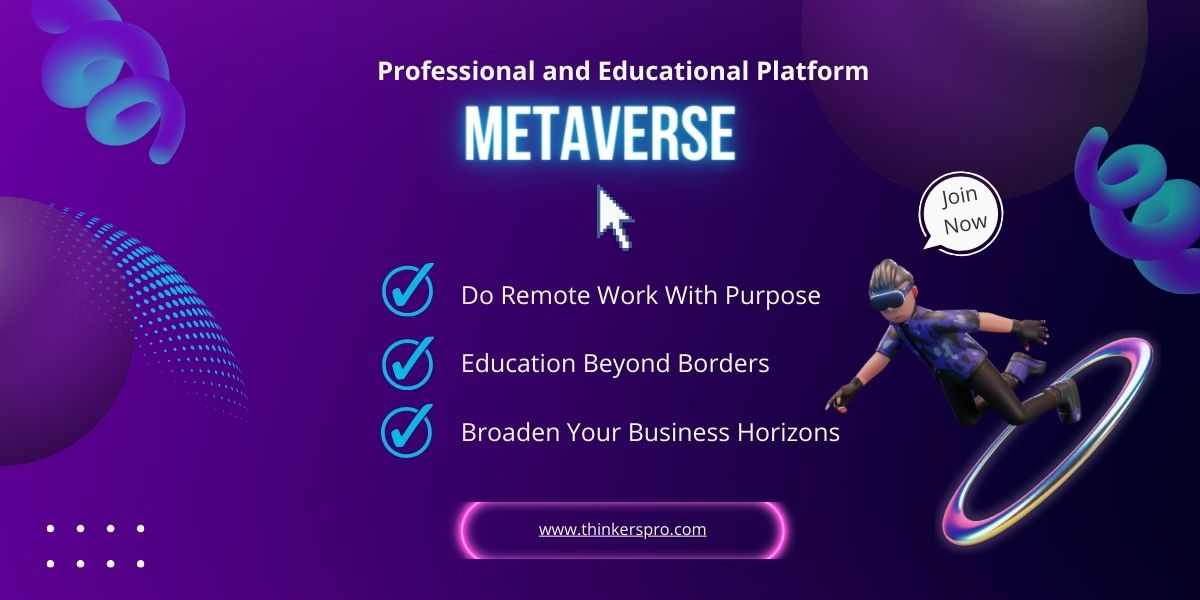



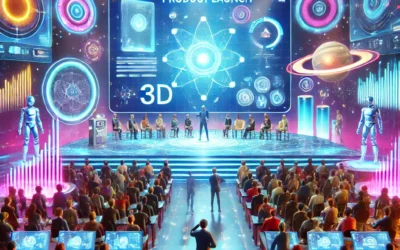

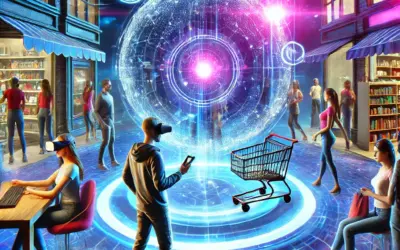


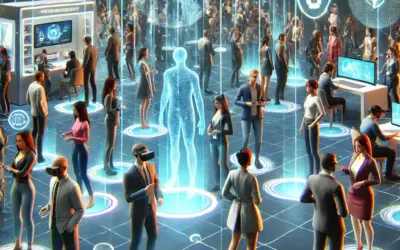

0 comentarios